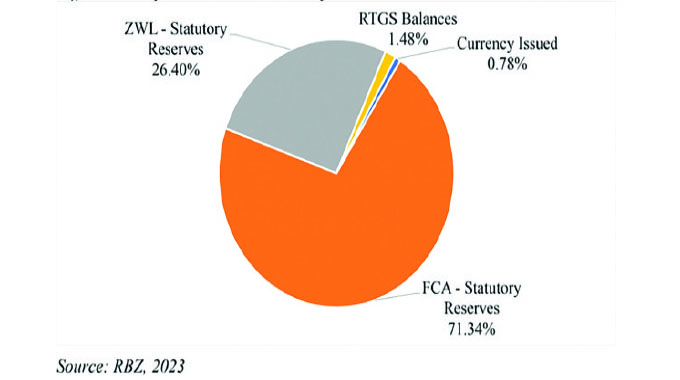ZSE and economic potential
The Zimbabwe Stock Exchange has been the place to be for investors in 2013 as the market has been on a strong and resilient rally for the greater part of 2013, despite the deteriorating levels of economic activity in the country. Whilst local investors have been hamstrung by liquidity challenges, the market has been primarily driven by foreign investors who now account for the bulk of trades on the ZSE.
As at mid-November 2013 (the time of this article) the total value of trades on the ZSE were US$420 million with foreign investors being involved in trades worth US$411 million on either the buy or sell side. Total foreign “buys” (inflows) were worth US$250 million whilst foreign “sells” (outflows) were worth US$161 million translating to a net inflow of US$89 million into the country through ZSE this year.
The main attractions of the ZSE to foreign investors has principally been the fact that trading is conducted in US dollars, therefore there is limited or no exchange rate risk for fund managers in advanced economies. Most emerging and developing economy currencies are very volatile therefore foreign fund managers’ risk losing value from exchange losses.
Financial reporting by companies listed on the ZSE is done in US dollars which makes it easier for foreign investors to analyse and understand them. Another attraction to the ZSE is that in 2009 Zimbabwe removed barriers to capital flow for foreign portfolio investments through the implementation of favourable dividend and capital repatriation policies, which have also contributed to the increased flow of foreign capital on the ZSE. Exchange controls in many emerging economies often deter foreign portfolio flows on their stock exchanges.
These are some of the attractions that have lured foreign portfolio investors onto the country, but such investors are sophisticated and seldom ignore glaring fundamental risks in markets they invest in, which brings us back to the question of why there is a disconnect between the ZSE and the Zimbabwean economy.
The ZSE Industrial index as at November 18, 2013 was up 42,57 percent on a year to date basis, which from a fundamental analysis perspective defies logic as things on the ground economy wise are actually getting worse. The crippling liquidity crunch, which has its roots in non-performing loans (NPLs), has metamorphosed itself into weakened household effective demand, which has lowered corporate earnings, Government revenues, as well as increasing unemployment.
Interestingly, this clear disconnect between the economy and the stock market is also quite apparent in advanced economies at present as economies such as the US, United Kingdom, eurozone and Japan are all struggling, but their stock markets are up significantly or in some cases are at all-time highs.
On a year to date basis as at November 18, 2013, the Dow Jones and S&P 500 were both up 21,92 percent and 25,62 percent, the FTSE 100 was up 14 percent, the Euro Stoxx 50 was up 16,9 percent and the Nikkei 225 was also up 45,88 percent. This clearly highlights that the situation on ZSE is not unique to Zimbabwe and being primarily fundamental analysts, we do not expect such an anomaly to persist for too long, even in the advanced economies.
There are two main arguments that can explain the current disconnect between the performance of the ZSE and that of the economy. The first argument is that stock markets are leading indicators reflecting an overall market consensus on the growth direction of an economy.
The argument further states that stock markets as a leading indicator, tend to launch into rallies or corrections around economic inflection points. An economic inflection point is a dramatic change or turning point in an economy or country which can yield either positive or negative results.
Therefore, a rally-inducing inflection point is that point where economic growth stops falling and begins to rise, which also implies that GDP growth at that point will be at its lowest. A good example of a rally-inducing inflection point was when the Zimbabwean economy dollarised in late 2008 and the hyperinflation downward economic spiral stopped whilst for the first time in a decade the economy started growing, which led to the ZSE bull run of 2009.
Inflection points are not limited to economic events as they can also be triggered by social, political, or even environmental events in the case natural disasters. Against this background, the question remains is what inflection point or points triggered and have sustained the current 2013 bull-run on the ZSE?
If this argument on inflection points is anything to go by, it means that foreign investors on the ZSE who continue to drive the market upwards are definitely seeing something that local investors are not seeing. Our guess is probably an anticipated massive policy shift by the Government in the short to medium term as it is clear that the current policy framework is neither working nor sustainable and could plunge the country back into a recession.
But at the end of the day, it is anyone’s guess, which compromises the validity of this argument in the Zimbabwean context.
The second argument regarding why there is currently a disconnect between stock markets and their economies across a number of advanced and emerging economies has to do with the unconventional monetary policy termed Quantitative easing (QE), that is currently under implementation in advanced economies.
Quantitative easing is a complicated form of open market operations which entails central banks adding credit to the economy through buying assets of banks such as mortgage securities, bonds, treasury notes, to name a few. The process effectively increases liquidity in the economy as banks will have more money than they need in their reserves, which they then lend to other banks and customers. The global economy has been awash with cheap money since the 2008 Global Financial Crisis because of quantitative easing programs in primarily the G4 countries namely United States, United Kingdom, European Union and Japan.
The United States Federal Reserve has bought treasuries worth around US$1,2 trillion since the global financial crisis, whilst the European Central Bank has pumped 489 billion euros of liquidity into the eurozone since the crisis.
The United Kingdom through the Bank of England pumped in £375 billion in the form of QE whilst most recently, the Bank of Japan decided to pump US$1,4 trillion over the next two years to stimulate the Japanese economy. Although a lot of money has been pumped into these economies through QE the response in economic activity has remained marginal. In fact, according to leading economists it is estimated that 40 percent of the increase in the US monetary base under QE1 leaked out in the form of increased gross capital outflows, whilst at least one third of QE2 is also estimated to have leaked out. QE1 started in November 2008 and ended in March 2010, whilst QE2 started in November 2010 and ended in June 2011. The US economy is currently under QE3 which started in September 2012.
The destinations of the leaked funds are primarily the emerging and developing economies, where they arrive mainly in the form of portfolio investments as witnessed on the ZSE. There have often been concerns by economist that the QE programme could be fuelling another asset bubble in global equity markets as only a small proportion of the funds have actually reached the real economy, whilst the bulk of the money created by the program has found its way onto stock markets as bond yields have declined and become unattractive because of the artificial demand created by central banks.
If the QE argument holds, it means that emerging and developing economy stock markets such as the ZSE will be vulnerable to sudden and volatile movements especially when QE is tapered off.
It is therefore very difficult, against this background, to isolate the actual root cause of the current ZSE rally, but we believe that it is probably a combination of both the inflection point and QE arguments that has driven the market to record highs despite an underlying struggling economy.
In addition, one also has to consider the fact the foreign investors managing funds worth billions of dollars are not going to be concerned by a US$10 million exposure to Delta or Econet in Zimbabwe which may reflect in their portfolios at less than half a percent of their overall equity holdings.
They may even double their exposure to Zimbabwe with little or no increase in their risk profile as their exposure will still be insignificant compared to their size.
This is also another perspective one has to look at to understand why the ZSE has remained firm in a struggling economy.
What this also tells us from an overall perspective is that globalisation is a reality and now that the country is under the multi-currency regime anchored by the US dollar, policies that are prescribed overseas such as QE will also impact economic activity in Zimbabwe. It is therefore important as a country to understand these global dynamics so as to exploit them through avenues such as the ZSE to unlock value and liquidity for the economy.
This article was written by Zimnat Asset Management for FinX.






Comments